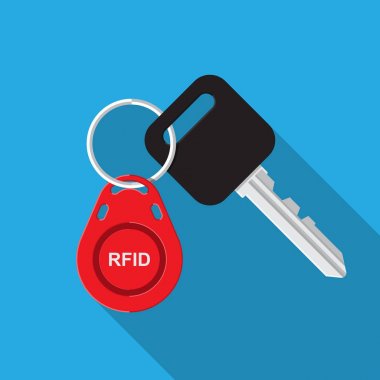What is RFID?
RFID means Radio Frequency Identification, or more simply radio-identification in French. This technology makes it possible to read, save and collect data remotely stored on radio tags, also called RFID tags. Each radio tag includes a silicon microchip, an antenna and an encapsulation or substrate . The chip stores data which is transmitted via the antenna to a reader transmitting at a certain frequency.
Radio frequency identification was first used in the 1930s by the British army and then a few years later by the Soviet Union. RFID developed over the following decades (object traceability, security, defense), but it is only since 2005 that it has been used globally throughout the world. Popular, it is found today in many daily uses.
RFID, how does it work?
The operating principle of RFID is simple: the reader remotely reads the RFID tag containing the data by emitting a radio frequency signal.
The RFID reader
The RFID reader can power passive tags, read and write data on the tags, convert the received information and transmit it to the terminal by transmitting a radio frequency. Frequency varies depending on application. The low-frequency transmission speed is slow and the distance is short, but regardless of the environment, the readability is high. The higher the frequency, the faster the transmission speed, and the longer the range, the harder it is to read. For example, the lower frequency is used for tracking animals and objects, while the higher frequency is used for electronic toll collection. There are several types of readers, always depending on the objective. They can have different sizes, fixed or portable.
Passive RFID tags
Passive RFID tags are powered by the RFID reader by transmitting electromagnetic energy when in use. Their advantage is prudence. They are easy and cheap to make. Passive RFID tags are the most commonly used.
Active RFID tags
Active RFID tags can transmit signals over long distances and store more data using built-in batteries. Compared to passive RFID tags, they have higher manufacturing costs and a shorter lifespan. Their use is more specific and their scope of use is also more restricted.
Semi-active RFID tags
There are semi-active RFID tags. They work similarly to passive tags, but have a small battery to store data.
What is RFID used for?
Practical, discreet and easy to implement, RFID technology is now widespread throughout the world. It is mainly used to trace and identify objects or people. It is found in particular in:
- electronic tolls;
- access to public transport;
- contactless payment;
- the identification and traceability of objects (inventory of department stores for example);
- access controls;
- biometric passports;
- anti-theft devices;
- household waste management ;
- the marking of living beings (plants, livestock, human beings).v




